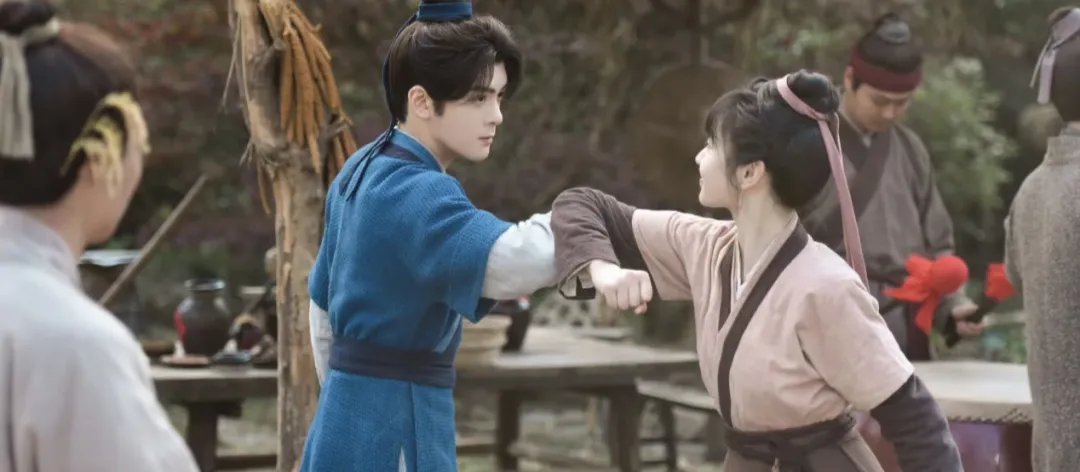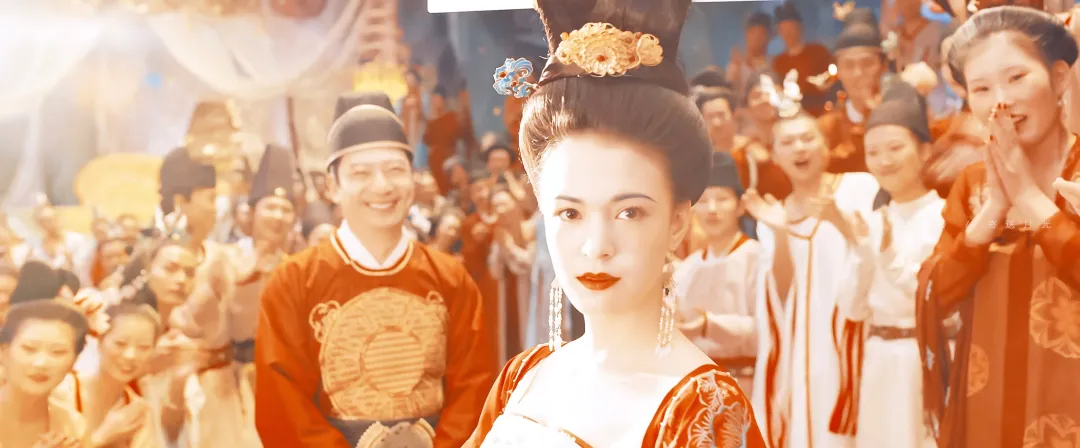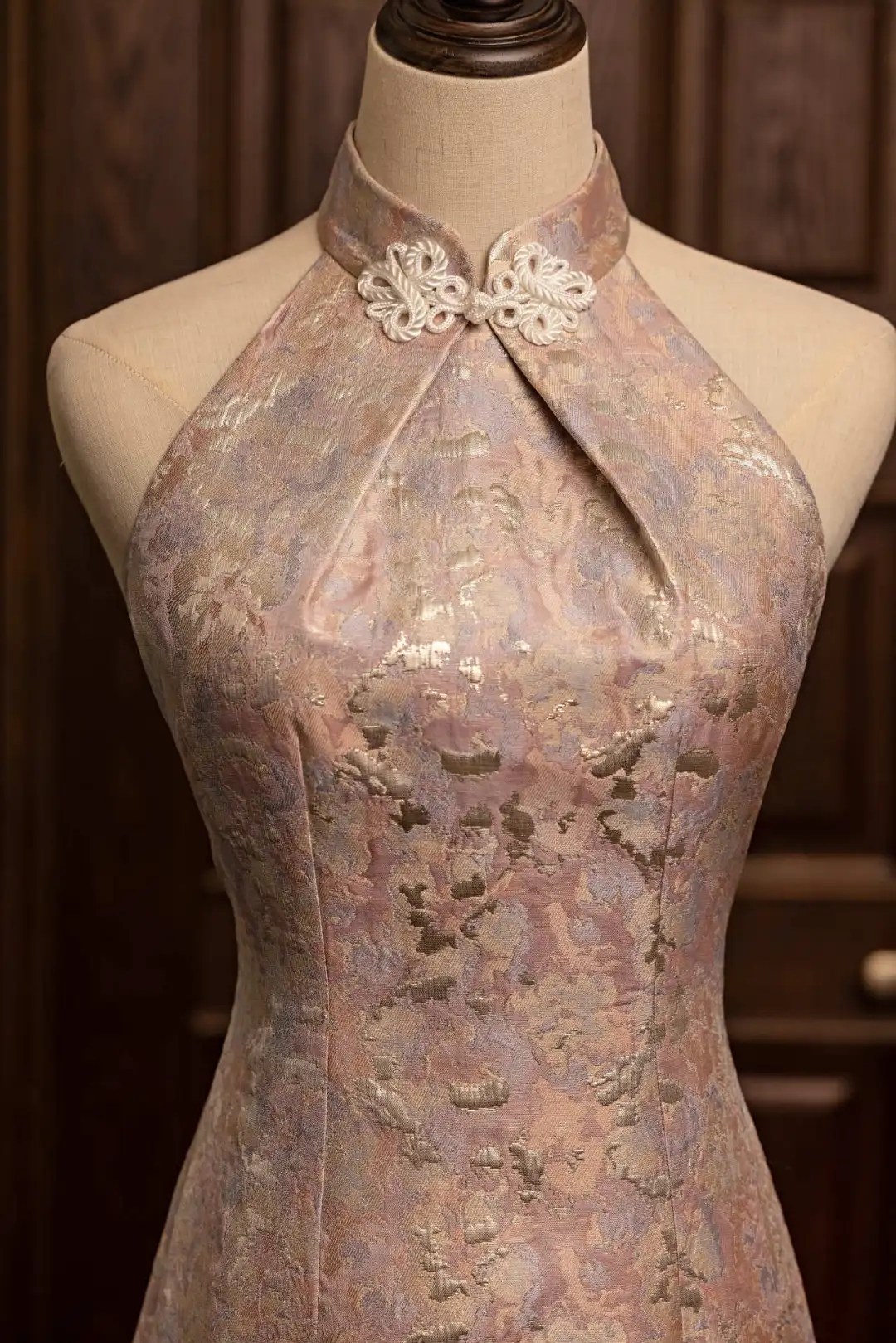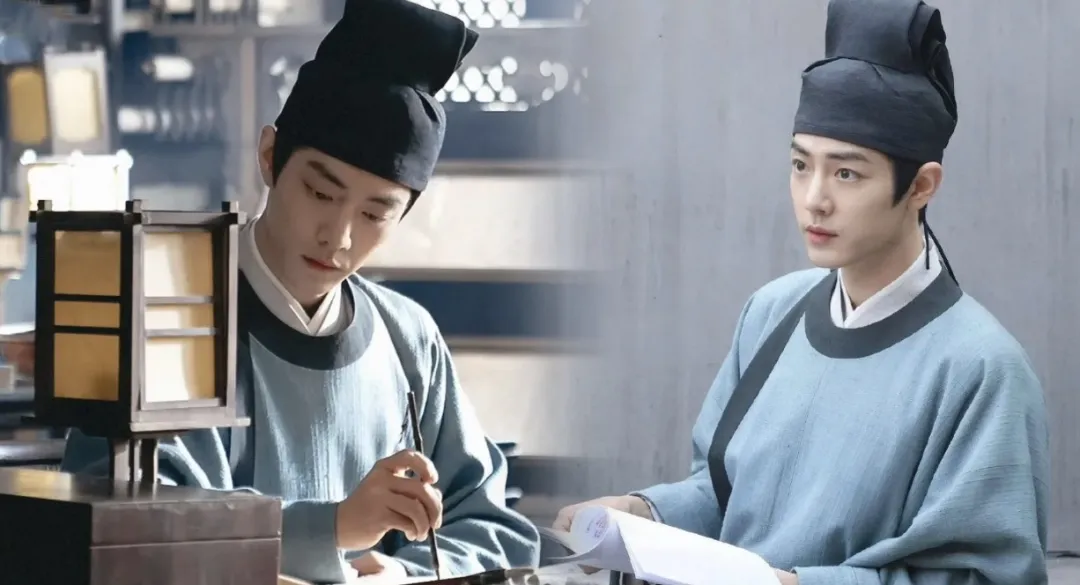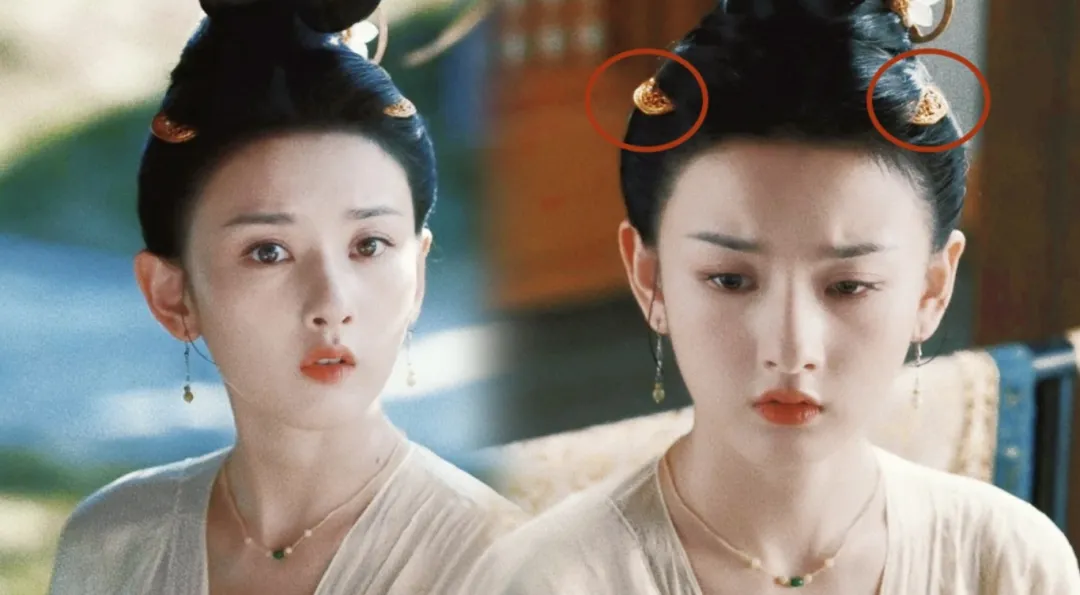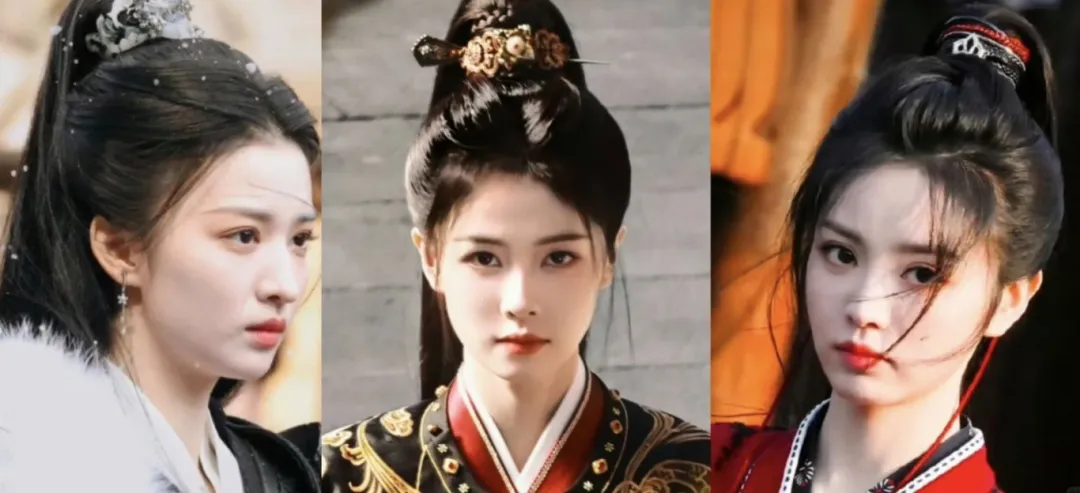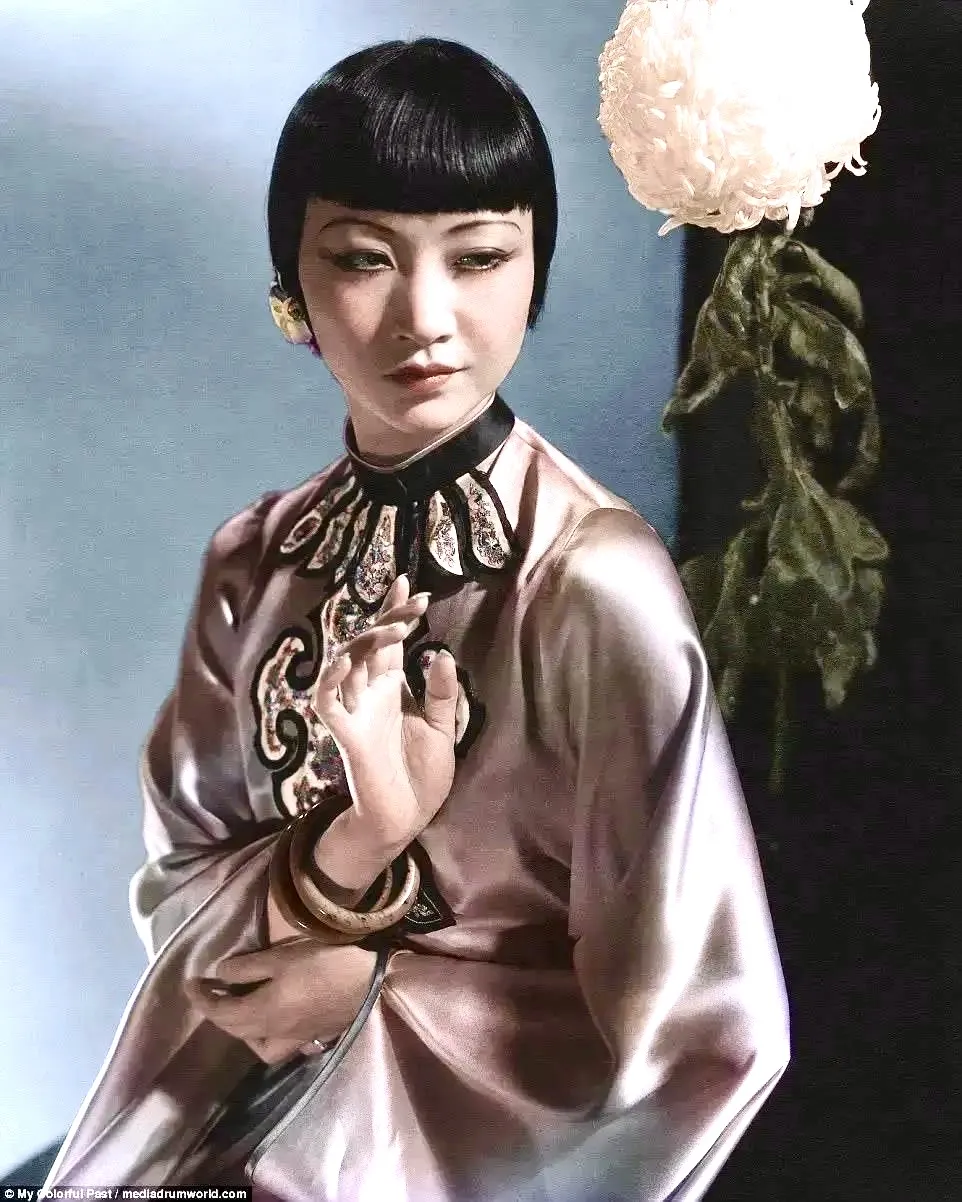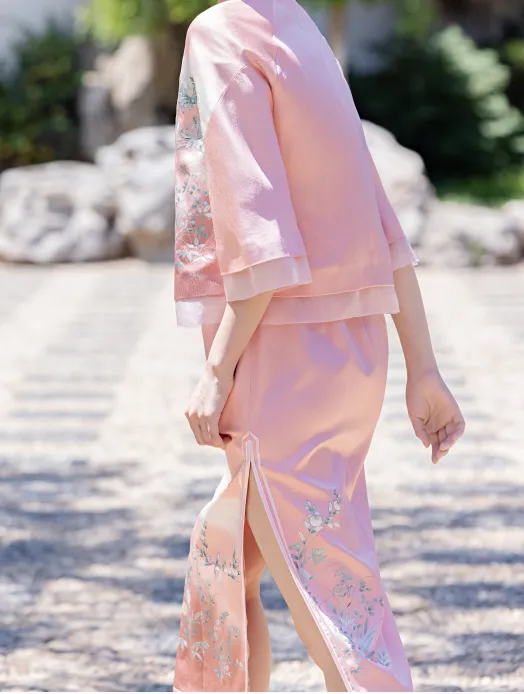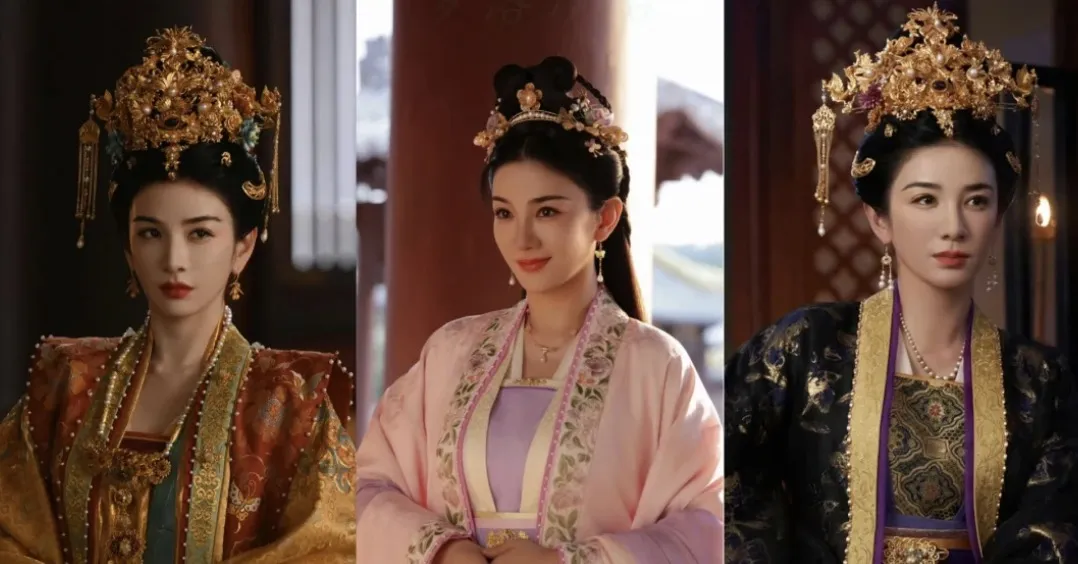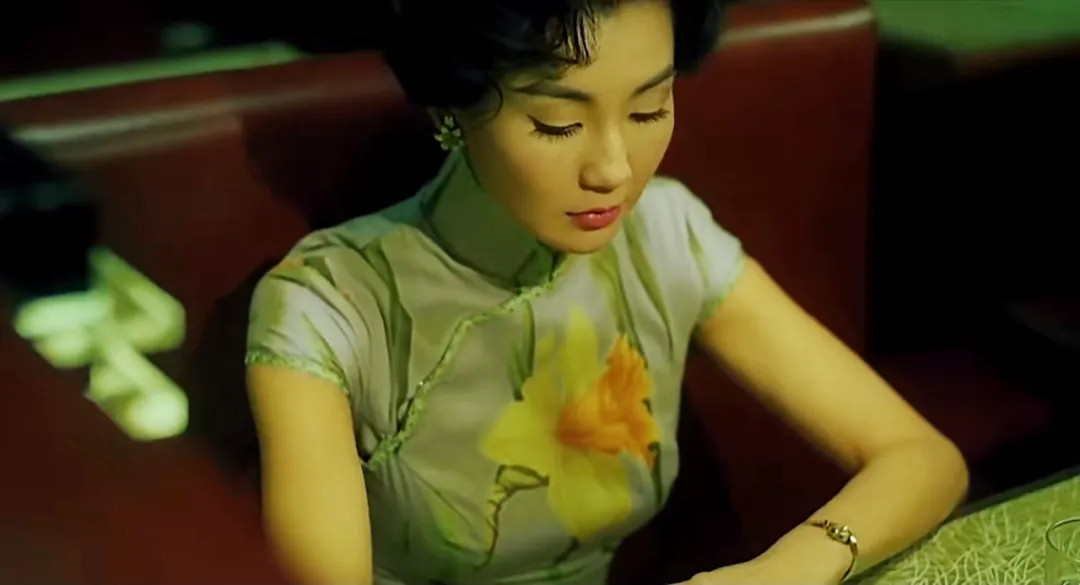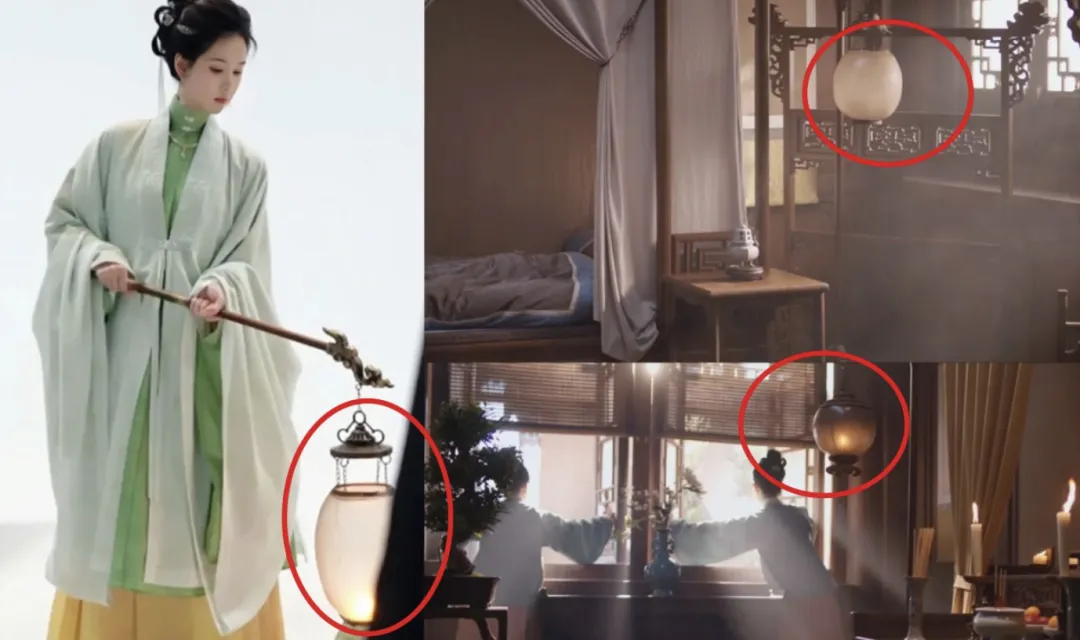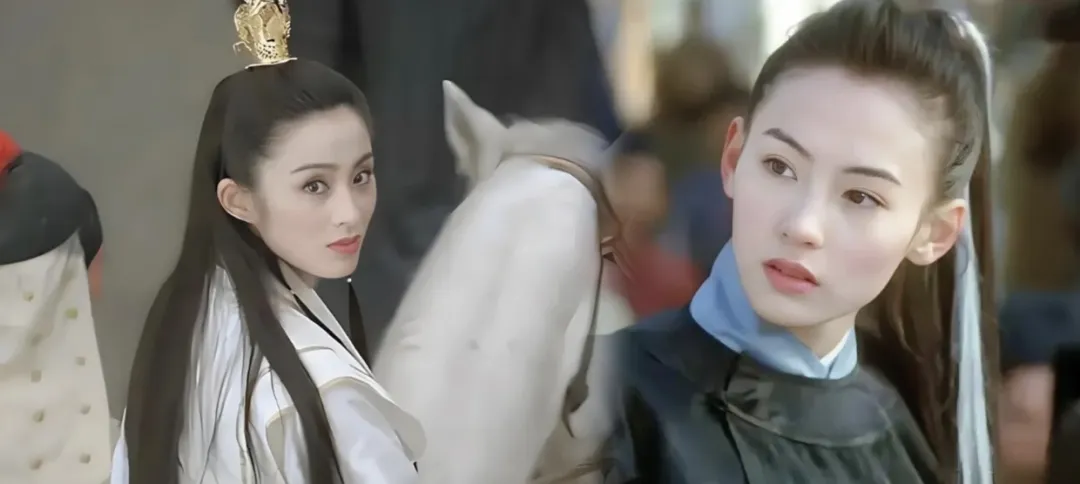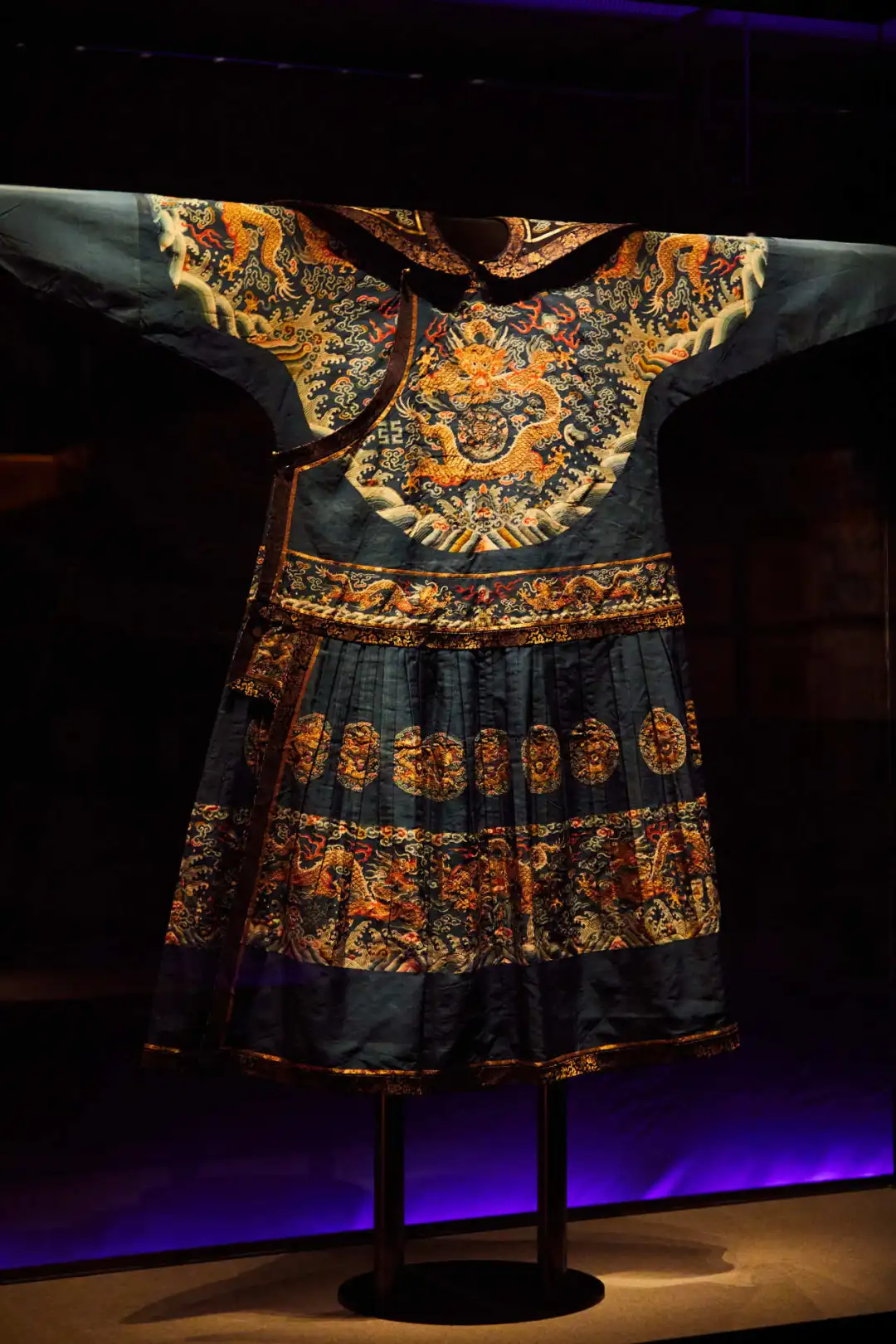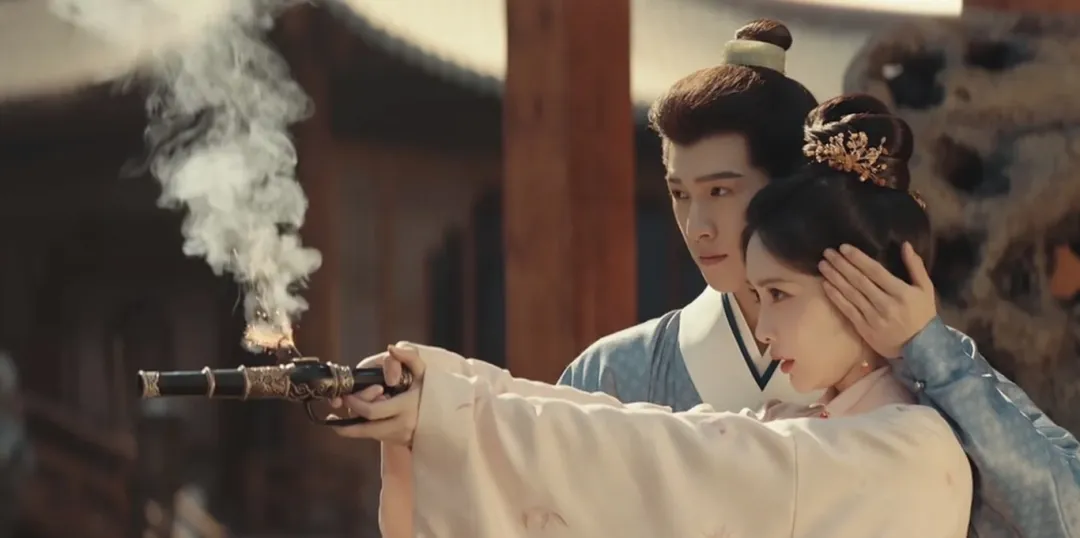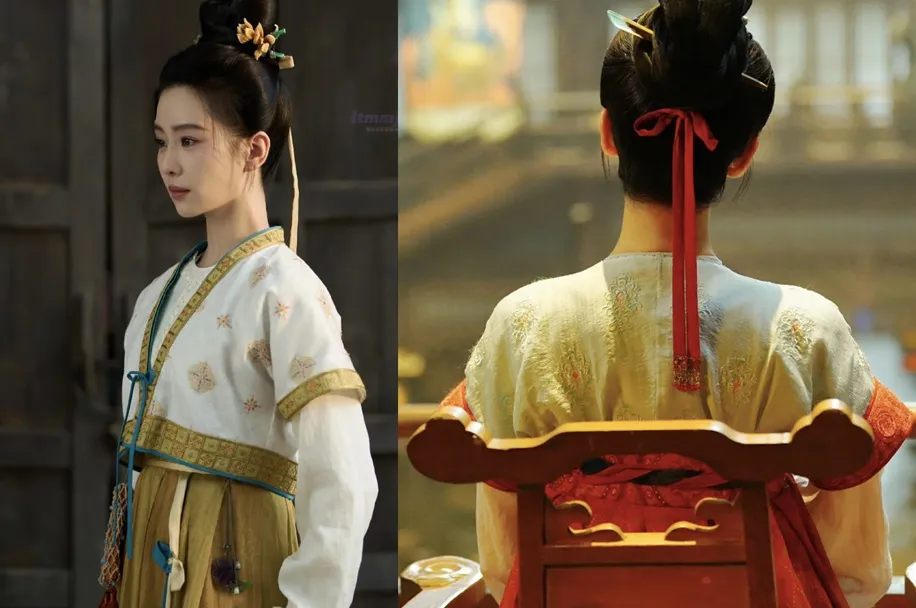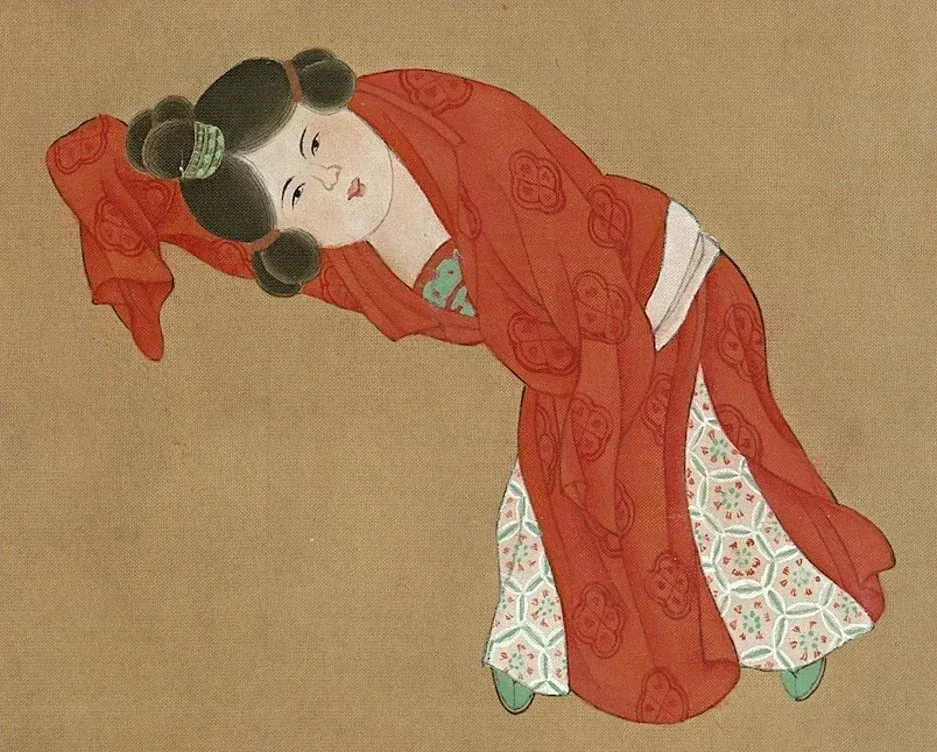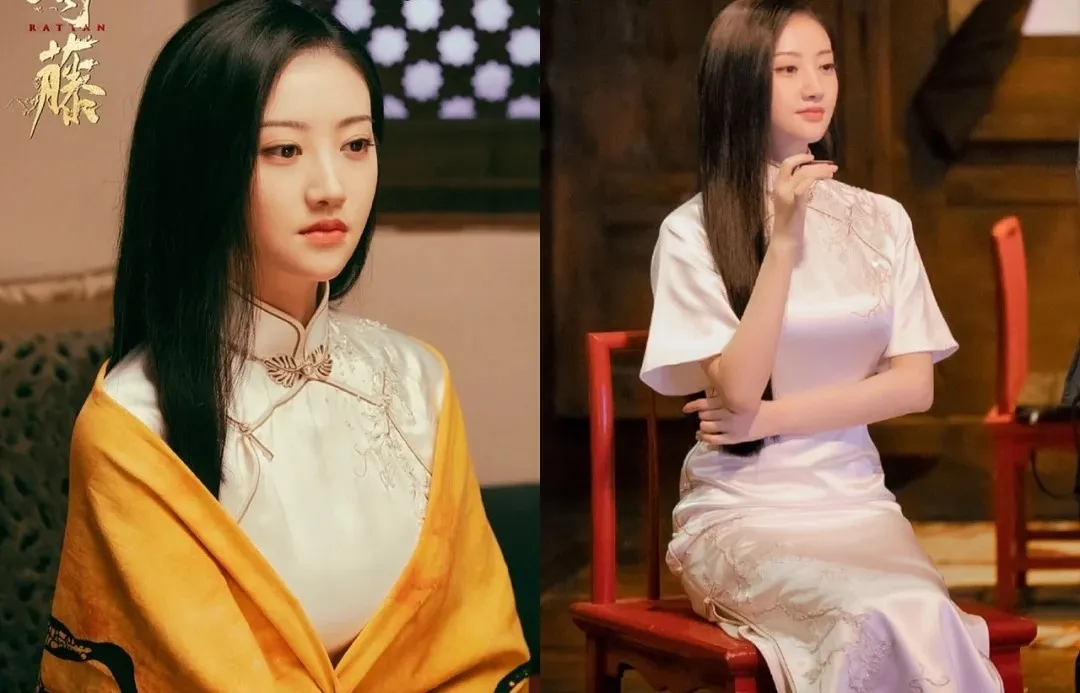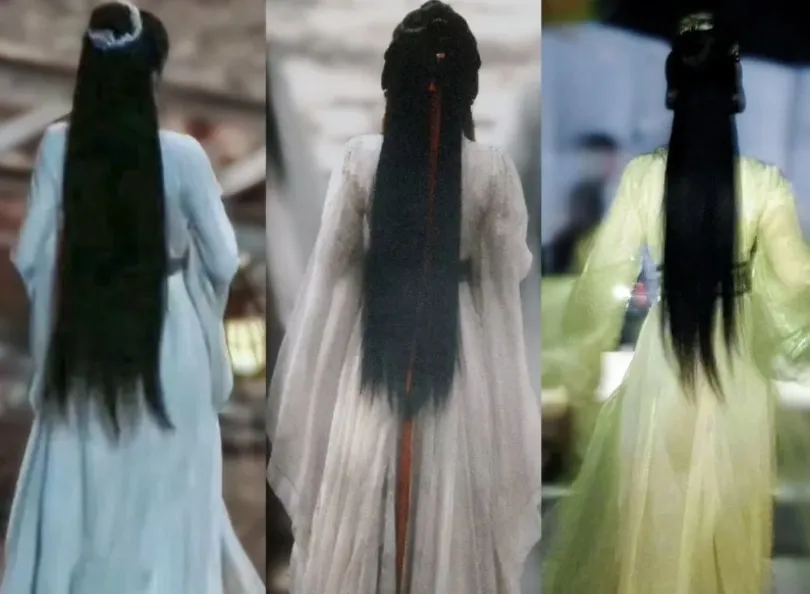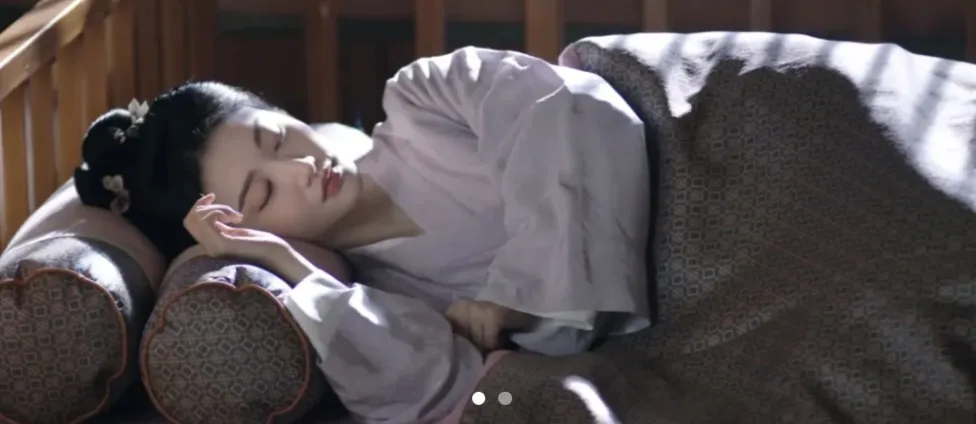Article
搜索结果:
-
Did Ancient Commoners Really Only Wear Coarse Linen?
Do you also think that commoners in ancient times, like those portrayed in historical dramas, mostly wore coarse linen clothes? You might not know that ancient people also had a few decent outfits for special occasions such as festivals, visiting relatives, or attending weddings. Some have asked why we don't discuss commoners' clothing, assuming the articles only focus on noble styles. People might wonder, 'Could commoners really wear silk or gold in daily life?' There's actually some misunderstanding here. In ancient times, many trends originated among the nobility and later spread to commoners, while some crafts improved among commoners and rose to popularity among nobles. So, there was no absolute rule. Here's the conclusion: ancient clothing styles were quite similar (except for some impractical wide - sleeved designs). What people wore mainly depended on the occasion—for grand ceremonies or rituals, they would prepare finer attire. The quality of clothing was reflected in the fabric, craftsmanship, and vibrancy of colors. Another factor was occupation. Laborers wore durable clothes like hemp garments, but not all commoners worked in fields, so coarse linen wasn't universal. In the Ming Dynasty, for example, the silk industry thrived in Jiangnan (江南), and even ordinary people wore… -
The Beauty of Tang Dynasty Women
Whenever people mention the aesthetic standards of the Tang Dynasty, nine out of ten will say, 'Of course, plumpness was considered beautiful!' Many plus - sized girls have been teased with comments like, 'If you went back to the Tang Dynasty, you'd definitely be a beauty.' But was Tang Dynasty aesthetics really that rigid? Let's get straight to the point. Don't misunderstand—preferences for body types in a certain era don't represent the whole picture. Ancient people weren’t as strict about beauty standards as one might think. The Tang Dynasty's aesthetics evolved over time, reflecting its inclusive nature, which was the true essence of its golden age. With cultural confidence, women didn’t suffer from appearance anxiety! From the slender figures of the early Tang to the fuller beauty of the High Tang, it was all part of women’s self - awareness and expression. While body ideals shifted, the underlying principle was health and vitality—a remarkably balanced perspective. Let’s take a quick look at the evolution of Tang Dynasty aesthetics. Early Tang The early Tang inherited the Sui Dynasty’s preference for tall, slender figures. Women wore layered skirts, and their makeup was understated, characterized by thin eyebrows, pale faces, and red lips.… -
Explore the Chinese Color - Hidden in Cheongsams
Just as Tagore described, "Every open rose brings me the greetings of that rose in the eternal spring." And as Bei Dao interpreted spring precisely, "This is spring, the wildly beating heart disturbs the floating clouds in the water." What is really disturbed? Is it the heart, or the long - awaited desire to embrace beauty after a dull winter? So, in today's issue, inspired by color - matching in dressing and using beautiful cheongsams as materials, let's explore the amazing color - matching in the eyes of cheongsam designers, which we can apply in our daily outfits. Light Colors Main color: 80% Ningzhi White (凝脂白) + 20% Apricot Yellow. This is an extremely gentle cheongsam. The warm - toned color scheme is skin - brightening and elegant, perfect for women to decorate themselves sensually. The main color, like condensed milk, comes from the traditional Chinese color Ningzhi White, which matches the charming luster of silk. It echoes Bai Juyi's famous line in "Song of Everlasting Sorrow": "In spring's cold she bathed in the Huaqing Pool, the warm water smoothed her creamy skin." The matching yellow magnolia embroidery takes the rich yellow tone of ripe spring apricots. The stronger the… -
The Look of Xiao Zhan in Cdrama Zanghai Zhuan
The trailer of the ancient - costumed TV drama "Zanghai Zhuan (藏海传)" has been released, and Xiao Zhan's looks in different periods are eye - catching. Netizens said, "This is what the costumes of Ming Dynasty scholars should look like!" First, the clothing Xiao Zhan wears in "Zanghai Zhuan" is a round - collar lanshan (襕衫). The round - collar refers to the collar style. Lanshan was particularly popular in the Song and Ming dynasties. Wearing a Confucian cap, it became the iconic clothing for the scholar - official class, Confucian scholars, and students at that time. Also, it was widely used in the Confucius worship ceremonies in local rural schools as the exclusive clothing for the dancers in the six - column dance. The lanshan in the Song and Ming dynasties had differences, but both had a horizontal hem. According to "History of the Song Dynasty: Records of Ritual Paraphernalia", "The lanshan is made of fine white cloth, with a round collar and large sleeves. A horizontal hem is added at the bottom as a skirt, and there are pleats around the waist. It is worn by Jinshi (successful candidates in the highest imperial examinations), students of the Imperial… -
What Are the Hair Accessories of Zuer Song?
In the ancient costume drama No Worries Ferry, Zuer Song's Tang Dynasty-style bun appears simple yet elegant. The hair accessories on her temples, not overly exaggerated, perfectly complement her facial features. So, what exactly are these hair accessories called? Well, they are decorative hair ornaments. Initially, combs, Bi (篦), and Huadian (花钿) were worn on the temples, and later, specialized accessories like Lianshu (帘梳) and Yanbin (掩鬓) emerged. This way of wearing them helps fill the decorative gaps in the bun, adding layers and visually elevating the crown of the head while enhancing facial contours. Let's start with combs. This comb - wearing method has a long history, dating back to the Han and Jin Dynasties as decorative items, categorized into wide - toothed combs and fine - toothed Bi. It reached its peak of popularity during the Tang and Song Dynasties. In the mid - to - late Tang Dynasty, with the improvement of living conditions, women became more inclined to adorn themselves. They would style elaborate, tall buns and wear various hair accessories. Combs, like jade pendants, were symbols of social status. The higher one's status, the more exquisite and luxurious the combs were. Ancient combs, as hair… -
Why Are Heroines in Cdramas Always Using Same Ponytails?
It's unclear when it started, but almost all heroines and heroes in ancient - costume dramas now sport high ponytails, and the 'armor battle - damaged makeup' trend has also become popular. Netizens point out that high ponytails can actually hit the face during martial arts practice, which is quite painful. The mass replication of high ponytails and battle - damaged makeup not only risks causing visual fatigue but also likely puts pressure on makeup artists and stylists to create unique variations. Let's revisit the costume drama styles of 50 years ago. The most classic is arguably the image from A Touch of Zen. In 1970, actress Xu Feng starred in A Touch of Zen, which catapulted her to fame and established her cold yet glamorous 'heroine' persona. Her character design featured a high bun, often paired with a headscarf or hat. Over her 15 - year screen career, she appeared in about 50 films, all as a heroine. This sleek attire and hairstyle conveyed an independent, self - reliant, and powerful image. Looking at other classic films, heroines rarely wore ponytails. Even with updos or half - updos adorned with accessories, the styling showcased distinct personalities while still emphasizing… -
The Peak Cheongsam Show from 30+ Years Ago
The cheongsam, a world - renowned national element and part of Chinese culture, has always been an endless source of inspiration for many designers. Compared with the bold and direct charm of Western women, the cheongsam represents the elegant qualities of Eastern women, which are both mysterious and gentle, free - spirited and full of allure. Today, let's talk about how the cheongsam can create unique and subtle chemical reactions in the hands of foreign designers within the Western clothing structure and silhouette design. The internationally famous fashion designer we're going to introduce today, John Galliano, also known as 'Pirate King', is a genius full of creativity. He always creates extreme, gorgeous, and unparalleled fashion aesthetics. John Galliano was born in Gibraltar in 1960. At the age of 6, he moved to the UK with his parents. Due to poor family conditions, he lived in poor areas across the UK during his childhood. This exposure to diverse customs helped him develop a rich aesthetic sense. He is a pioneer among designers in exploring different regional cultures, and his works often feature a large number of Asian, African, and Afro - Latin elements. In 1980, Galliano entered Central Saint Martins College… -
Anna May Wong: Bringing Qipao to the World 100 Years Ago
The beauty of gardenias and jasmines intertwined is truly unforgettable. In the previous feature, we briefly introduced Anna May Wong. Those familiar with Chinese - American actors in Hollywood surely know this name. Even if not, you've probably seen her iconic photos. With big bright eyes, classic willow - leaf eyebrows, high cheekbones, and a fringe, dressed in a cheongsam, she was a well - known Eastern face in early 20th - century Western society. Her hairstyle, makeup, and clothing style were emulated by countless Western girls. She was also the first Chinese actress to bring the cheongsam image to Hollywood. Let's explore her story and the beauty of the cheongsam she presented. Anna May Wong was born in Los Angeles, US, with her ancestral home in Taishan, Guangdong. Her family was third - generation immigrants. Her grandfather was among the earliest Chinese laborers who went to California to pan for gold. Her father, Huang Shanxing, held traditional ideas, favoring sons over daughters and longing to return to his roots. He returned to Guangdong, got married and had children there, then came back to the US and married Anna May Wong's mother. Before her, there was an elder sister, and… -
Slits in Cheongsams: The Secret of Chinese Sensuality
It's time for another session of sharing cheongsam details. In previous issues, we've talked about the types of handmade frog buttons on cheongsams, the collar and sleeve styles, and the exquisite front - placket patterns. Today, I'd like to discuss the slits, which play a crucial role in the overall design of cheongsams. Don't underestimate this small detail. A tiny slit can present a variety of charming female moments. A smaller slit results in smaller steps, making the posture and gait automatically slow and elegant. A larger slit offers a stronger sense of fluidity, and the faintly visible legs bring out the charming rhythm of the cheongsam. The slits in cheongsams are like opening the door to the sensuality of Chinese clothing. However, this sensuality is not the straightforward Western - style one. It is based on Chinese female culture and the generally reserved and implicit nature of Eastern women. Through a small opening, it slowly releases the rhythm and charm of female beauty. Next, let's talk about the common types of cheongsam slits, as well as their respective advantages and characteristics. Before that, here's a little knowledge about slits. In the early Republic of China, cheongsam slits were actually… -
The Gorgeous Beauty in Old TV Dramas
Who understands! There was a kind of resplendent beauty in old TV dramas. When I was a child watching period dramas, I was always amazed by the large phoenix hairpins and the dazzling golden ornaments on the characters' heads. It fulfilled the imagination of grandeur and nobility. Why is this style less common in modern dramas? Let's start with the conclusion. This style of wearing numerous hairpins was particularly representative of the late Tang Dynasty, with its origins traceable back to the Southern and Northern Dynasties. The late Tang period witnessed unprecedented extravagance in women's hairstyles and attire, often described as 'explosively stylish.' Literary descriptions further deepened our imagination of ancient women's hair ornaments. For example, Emperor Xiao Yan of the Southern and Northern Dynasties wrote in 'Song of the River,' 'Twelve rows of golden hairpins on the head, five - patterned silk shoes on the feet.' Tang poet Shi Jianwu also noted in 'Makeup Removal Poem,' 'Under the lamp, I gaze again at the bronze mirror, vainly inserting twelve rows of golden hairpins.' The popularity of such intricate hair ornaments was due to the Tang trend of high buns. The larger the hairstyle, the more hairpins were used. Thus,… -
Su Lizhen: A Peak in the History of Chinese Cheongsam
Today, let's continue our special topic on In the Mood for Love and appreciate the beauty of Maggie Cheung's cheongsams. Before delving into the topic, let's talk about the behind - the - scenes details of this movie. Maggie Cheung changed into 23 cheongsams in In the Mood for Love, all designed by the Hong Kong art director Cheung Shu - ping himself. Some of the cheongsam fabrics were his personal collections over the years, and the patterns and fabrics were already out of print. So, it's almost an eternal regret that it's impossible to recreate Su Lizhen's beauty exactly. Then, these cheongsams were handmade by Hong Kong master Leung Long - kwong, who has over sixty years of experience in cheongsam making. As he said, "I've never changed my profession in my life. I earn money with my heart." For these 23 cheongsams, Cheung Shu - ping was mainly responsible for design, color matching and sourcing fabrics, while Leung Long - kwong was in charge of measuring the body, cutting and sewing. It can be said that without the seamless cooperation of these two masters, there wouldn't be this world - renowned Chinese masterpiece. The emergence of In the… -
Why Are There So Many White Lanterns in Cdramas?
Why are there so many white lanterns in dramas like Yan Hui Shi, which references Ming Dynasty costumes? Even during festivals, white lanterns dominate. Isn't it considered unlucky to hang white lanterns at home? Let’s start with the conclusion. In traditional Chinese lantern culture, lanterns come in various colors, and white lanterns are one of them. Many ancient paintings depict white lanterns used in celebrations and rituals. People believed that lighting white lanterns at night could dispel darkness and convey blessings and good wishes. During festivals, households would hang white lanterns to express hopes for future happiness and prosperity. In daily life, white lanterns were also used for illumination, while other colored lanterns served as decorative accents. When lit, white lanterns emit a soft yellow glow, making them a common sight in ancient paintings. In Ming Dynasty-inspired dramas, aside from geometric-shaped lanterns (square, round, triangular) or those resembling animals and objects, we also see unique designs like horn lanterns, crimson gauze lanterns, and boneless lanterns. Among these, horn lanterns are one type of 'white lanterns' we often see. Similar lanterns include those made from sheep horn or the more expensive rhinoceros horn. Though they appear white, they are closer to… -
Is Cross-Dressing Real in Historical Dramas?
Is Cross-Dressing in Historical Dramas for Real? In many historical dramas, we often see women dressing as men to navigate various social settings. While modern audiences might view clothing as a matter of personal freedom, in ancient times, women wearing men's attire was far from acceptable—it was considered a breach of etiquette and societal norms. The answer lies in the rigid hierarchical systems of the past, where distinctions between age, gender, and social status were deeply ingrained. The idea of "separating men and women" wasn't mere moral policing but a means to enforce strict gender boundaries. As recorded in the Book of Rites: Internal Rules, "men and women shall not share garments." However, exceptions did exist. During the pre-Qin and Han dynasties, particularly in military contexts, women donning armor was a tactical move. For example, the Records of the Grand Historian: Annals of Xiang Yu recounts that Liu Bang deployed 2,000 women in armor to mislead Chu forces during a critical battle. Such instances, though rare, highlight the strategic use of cross-dressing. The Northern and Southern Dynasties saw legendary figures like Mulan, who famously took her father's place in the army, as immortalized in the Ballad of Mulan. Yet, as… -
An Unmissable Exhibition of Qing Dynasty Court Embroidery
This is a rather special share today. Recently, at the Guardian Art Center in Beijing, there was an exceptionally rare and once - in - a - decade exhibition of traditional Chinese attire—the Qing Dynasty Court Embroidery Exhibition. The exhibition traces the timeline from the early to the late Qing Dynasty, focusing primarily on the royal attire of the Qing court. Through the passage of a thousand years and the morning mist of history, we witness the unparalleled heights achieved in fabric, color, patterns, craftsmanship, and aesthetic levels of royal garments. At the same time, we can admire the brilliance and splendor of the ancient silk industry and traditional plant dyeing techniques throughout the Qing Dynasty. The Qing rulers placed great emphasis on using colors and patterns to establish the order and rituals of the dynasty. Thus, different colors carry distinct cultural connotations, and various printing techniques conceal philosophical and ritualistic meanings unknown to us. Today, let us follow my footsteps to appreciate the beauty of Qing Dynasty attire colors. Sacrifices were the most significant duty of the ancient emperors—a religious ceremony to express reverence and gratitude to the heavens and earth, embodying the ancients' worship and respect for natural… -
Firearms in Ancient China
In the ancient - costume drama Yan Hui Shi (雁回时), when Zhuang Hanyan took out a fire - arm, I bet many people's hearts skipped a beat. Netizens wondered, "Where did Yanzi get this fire - arm? Did she borrow it from Fan Xian and Fan Ruoruo?" Actually, fire - arms have appeared in other TV shows like The Longest Day in Chang'an 2 and The Ninth Purple. Let's start with the conclusion: Our ancient ancestors were not only kind - hearted but also very cool. Fire - arms were first created in the Yuan Dynasty in China, evolved from the fire - lance of the Southern Song Dynasty. They were the world's earliest tubular metal shooting firearms. Yes, by the Ming Dynasty, China had already entered the age of firearms. At this time, you could shout, "My lord, the times have changed!" During the Yuan Dynasty, the technology of firearm casting had reached a high level. Metal barrels, usually made of bronze or iron, could be produced for firearms. Before Zhu Yuanzhang established the Ming Dynasty, fire - arms were already the main weapon in production. After the founding of the Ming Dynasty, the production of fire - arms… -
Why No Summer Hanfu Wear in Cdramas?
It's rare to see short sleeves in ancient costume dramas. Why is that? Did ancient people not have summer Hanfu? Wearing multiple layers must have been unbearably hot, right? Let's get straight to the point. How did ancient people stay cool and stylish? They weren't foolish enough to suffocate themselves in long - sleeved layers. Ancient vests came in short - sleeved, sleeveless, and even strappy designs. If you rummage through an ancient wardrobe, you’d find inspiration that defies our conservative stereotypes. For example, the 'vest' or 'Bijia' was a sleeveless, front - opening garment with slits reaching below the knees. Inherited from the Song Dynasty and popular during the Yuan and Ming dynasties, it usually reached the hips or knees, and some were even longer, less than a foot from the ground. It was often worn over other clothes, and could be worn alone at home when relaxing and enjoying the cool. In the Ming dynasty, such vests were also called 'Gua' or 'Bijia', referring to sleeveless tops of various collar styles. At home, without an undergarment and with lightweight fabric, 'wardrobe malfunctions' were common. No wonder outsiders were barred from the inner quarters! Short sleeves, known as 'Banxiu'… -
When Qipao Meets Traditional Chinese Red
When Qipao meets traditional Chinese red, each piece is a true masterpiece! The fusion of gardenia and jasmine scents creates an unforgettable beginning. Today, I’m sharing about red Qipao. Among all colors, red is undoubtedly the star of Qipao. It's not only associated with wedding attire but also deeply rooted in China's historical and cultural symbolism. Red embodies the soul of Chinese culture, symbolizing auspiciousness, celebration, eternal brightness, warmth, hope, vitality, and prosperity. In Chinese history, the five colors—white, blue, black, red, and yellow—were linked to the Five Elements (metal, wood, water, fire, earth) and virtues (benevolence, righteousness, propriety, wisdom, trust). Starting from the Zhou Dynasty, red was revered as a symbol of power and nobility, gradually becoming a staple in both royal and common households. By the Tang and Song Dynasties, red was widely adopted in daily wear and weddings. In the Tang Dynasty, the fourth - rank officials wore dark crimson, and the fifth - rank officials wore light crimson. The popular colors at that time were crimson, purple, bright yellow, and green. The combination of crimson and green was commonly used for women's clothing, and this color scheme was also applied in weddings, with grooms in red… -
The Diverse Charm of Qipao Beauties, How Could She Be Missing!
In previous features, we discussed the unsurpassable peak in Qipao cinema history—In the Mood for Love. Today, I want to focus on Qipao appearances in TV dramas, highlighting those classic moments where Qipao beauties shone. Each of these beauties has her unique charm, and the Qipao they wore were equally distinctive. In the vast ocean of Qipao styles, external beauty is secondary; the key lies in wearing the Qipao with personal flair and character. First, let's talk about a widely recognized Qipao beauty from recent years—Jing Tian in Rattan (2021). Her portrayal of a vine spirit, set in the Republican era, featured numerous Qipao styles that redefined elegance. The satin Qipao, primarily in pearl white, with its high side slit, atmospheric connected shoulder sleeves, double-round front placket paired with delicate piping and inlaid silk hard flower buttons, exuded both nobility and grace. It was not only light and smooth but also convenient for movement. Paired with Jing Tian's long hair like satin, it combined sexiness and cold beauty. The lace-embellished Qipao in pale blue highlighted her delicate features. The lace perspective showed the female's graceful figure in a hazy and implicit way. With exquisite bead embroidery printing and a small… -
Why Costume Dramas Feature Loose Hair?
Why Do Costume Dramas Always Feature Loose Hair? In TV dramas, we often see characters with 'loose hair' styles, including half - down hairstyles. For ancient people, when was it necessary to tie up their hair? What were the customs around this? The conclusion is that both men and women were expected to tie up their hair in public after reaching adulthood. Many dramas wrongly assume that unmarried women can have loose hair and married women should tie it up. According to traditional etiquette, hair should be tied up after coming of age. Ancient coming - of - age ceremonies were closely related to hairstyles. For men, it was 'Guanli (冠礼)', and for women, 'Jili (笄礼)', also known as 'Shangtouli (上头礼)'. Records show men had Guanli at around 20, and women had Jili at about 15. For women, the Jili, also called 'Jiaji (加笄)' or 'Shangtouli', involved parents or elders tying up their hair and adding a hairpin, symbolizing adulthood and eligibility for marriage. As Confucian texts state, 'A woman promised in marriage is honored with Jili and given a courtesy name.' In Confucian ideology, wearing loose hair after adulthood was seen as barbaric or a disregard for rituals. The… -
Why Are the Pillows in Period Dramas So High?
Isn't It Uncomfortable? In period dramas, we often see these hard pillows. Even in museums, most pillow artifacts are made of wood or ceramic, making one wonder if they were truly this uncomfortable. The answer is that ancient pillows came in various forms, including silk, cloth, ceramic, wood, and even jade. However, softer pillows like silk or cloth ones didn’t preserve as well, so most surviving artifacts today are hard pillows. The Chinese character for 'pillow' (枕) has a 'wood' radical, suggesting that early pillows were primarily made of materials like wood or dried grass. The ancient text 'Shuowen Jiezi' defines a pillow as 'a support for the head during rest.' Some also used stones as pillows, especially in hot summers, as the coolness could relieve discomfort. As living standards improved, pillows diversified. For example, a silk pillow was unearthed from the Han Dynasty Mawangdui Tomb—a soft pillow! This rectangular pillow, embroidered with 'longevity patterns,' was stuffed with Eupatorium leaves, known for their aromatic and medicinal properties. The pillow’s ends were adorned with raised brocade, and its sides featured fragrant silk embroidery. This wasn’t just a silk pillow but also a medicinal one, proving that nobles had access to soft…
